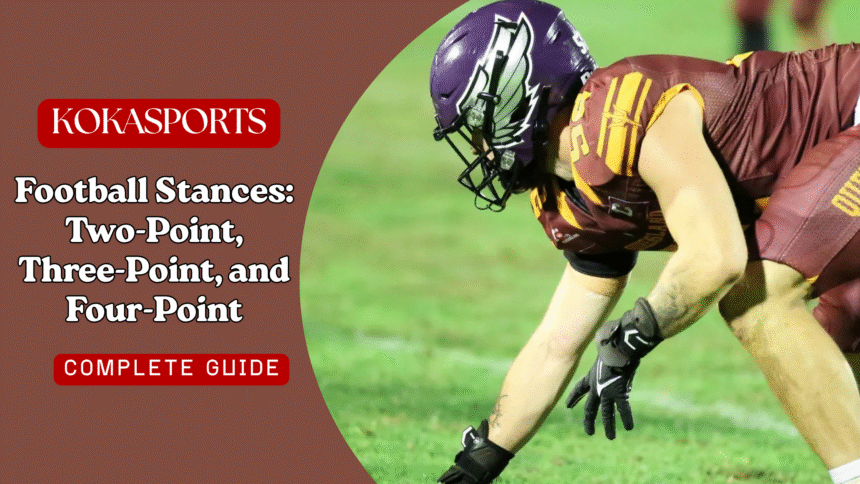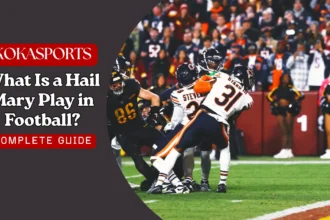Why Football Stances Matter in Every Play
Every great play in american football starts with one thing: the right stance. Whether you’re watching a professional game or coaching youth football, you’ll notice that players position themselves in specific ways before the snap of the ball. This isn’t random
it’s the foundation that determines whether a player wins or loses their battle in the trenches.
A football stance is how a player positions their body before the play begins. Think of it like a sprinter in starting blocks. The way you set up your body affects everything: how fast you move, how much power you generate, and how well you can react to what happens next. For offensive and defensive linemen, the stance can mean the difference between pancaking an opponent or getting blown off the line of scrimmage.
Football coaches spend countless hours drilling proper stance technique because it impacts every aspect of the game. A lineman with poor form will struggle with balance, lose leverage battles, and arrive late to their blocks. Meanwhile, a player who masters multiple stances used in different situations becomes a versatile weapon their team can deploy anywhere.
The basic types you’ll see in games are the two-point stance, three-point stance, and four-point stance. Each serves a specific purpose and offers unique advantages depending on the position and situation. Let’s break down everything you need to know about these fundamental positions.
Read More: What Is the Box in Football? Your Complete Guide to This Critical Zone
Two-Point Stance: Standing Tall for Maximum Vision
The two-point stance (sometimes called 2 point or 2-point stance) is exactly what it sounds like a player stands with only their feet on the ground, maintaining an upright position. You’ll most commonly see this from linebackers, defensive back players, and occasionally offensive player personnel in pass protection scenarios.
Why Players Use the Two-Point
Picture a linebacker scanning the field. They need to see everything: the quarterback’s eyes, the running back’s positioning, and how receivers are splitting out. A 2 point stance gives them this visibility while maintaining an athletic position to react quickly in any direction. This is why defensive player personnel in coverage roles almost exclusively use this setup.
Offensive line players might drop into a two-point during obvious passing situations. When your team is in third-and-long, offensive lineman players sometimes stand upright to better mirror quick pass rushers who are trying to speed around them. The upright position allows quicker lateral movement and better hand placement to control rushing defenders.
The main advantages include:
- Complete field visibility for reading plays
- Quick movement in all directions
- Faster reaction time to offensive and defensive schemes
- Better hand positioning for pass block situations
- Easier to maintain for extended periods before the snap
However, there’s a tradeoff. Players in a two-point position sacrifice some explosive power compared to those with a hand on the ground. They also give up leverage, which matters greatly in physical battles at the line of scrimmage.
Proper Technique for the Two-Point
To execute this stance correctly, start with your feet at shoulder width or slightly wider. Your knees should bend just enough to lower your hips not so much that you’re squatting, but enough to engage your leg muscles. Weight distributes evenly across both feet, with your arms hanging ready in front of your body.
The key coaching point is maintaining what we call an athletic position. Your chest stays up, your back remains relatively straight, and your eyes face forward. Think of how a basketball player defends: alert, balanced, and ready to explode in any direction. That’s the feeling you want.
Three-Point Stance: The Classic Power Position
The three-point stance (also written as 3-point stance, 3-point, or three point stance) is the iconic position most people picture when they think of football. This stance involves 3 points of contact with the ground: both feet plus one hand. It’s the preferred setup for most offensive lineman and defensive lineman players because it perfectly balances power, leverage, and explosiveness.
Setting Up Your Three-Point Stance Correctly
Let’s walk through the proper setup step by step. First, position your feet at shoulder-width apart with one foot slightly behind the other. Most players place their inside foot back (the foot closest to the center), while the outside foot steps forward. This staggered positioning helps you drive forward more powerfully.
Next, bend at your hips and knees until you can comfortably place one hand on the ground. Your hand on the ground should be directly below your shoulder, with your fingers spread for stability. Many young players make the mistake of reaching too far forward or placing their hand too far back both errors throw off your balance.
Your weight distribution matters enormously here. Roughly 60% of your weight should be on your feet, with only 40% supported by your hand. Too much weight forward and you’ll fall on your face at the snap; too much weight back and you’ll be slow off the ball. Your free hand should rest on your thigh or knee, ready to fire out.
The proper stance keeps your back at about a 45-degree angle to the ground. Your head looks up enough to see across the line of scrimmage, but not so high that your back arches unnaturally. Your hips should be higher than your shoulders but lower than your head creating that explosive launching position.
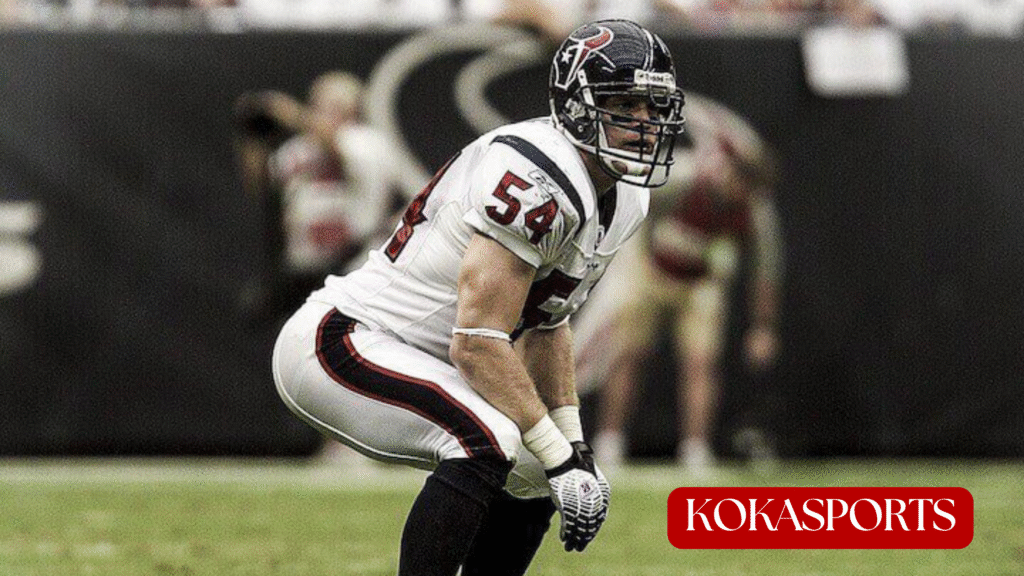
When the Three-Point Stance Dominates
The three point stance shines in run block situations and when pass rushers need explosive first-step quickness. Offensive line players use it to generate maximum forward drive into defensive player personnel. Defensive ends rely on it to shoot gaps and penetrate backfields.
Think about a lineman trying to move a 300-pound opponent. The three-point setup allows them to coil their muscles like a spring, then explode forward with their legs, hips, and arms all firing simultaneously. This coordinated power is much harder to generate from an upright position.
For defensive line players, the three-point lets them get their pads below the offensive player across from them. In football, low man wins. The player who makes contact with the ground from a lower position gains leverage and can control where their opponent goes.
| Aspect | Three-Point Stance Advantage |
|---|---|
| Power Generation | Excellent – full body coil and explosion |
| First Step Quickness | Very Good – explosive launch angle |
| Leverage | Excellent – low pad level at contact |
| Vision | Moderate – limited pre-snap reads |
| Versatility | Good – works for run and pass |
Four-Point Stance: Maximum Power for Goal Line Battles
The four-point stance (variations: 4-point stance, 4 point stance, or four point stance) takes things to the extreme by putting both hands on the ground. All four limbs contact the ground, creating the lowest possible starting position. You’ll see this primarily from defensive lineman players in short yardage situations or on the goal line where even six inches matters.
Why Go to All Fours?
When your team absolutely needs to stop the offense from gaining one yard, the four point stance becomes your best friend. By placing both hands down, a player drops their center of gravity to its lowest point. This makes them nearly impossible to move backward and gives them incredible forward drive.
The physics are simple: lower position equals better leverage. When a defensive player in a four-point setup crashes into an offensive line stances player who’s standing higher, gravity works in the defender’s favor. They’re driving up and forward while the offensive player is trying to hold ground from a higher, weaker position.
Pass rush specialists might also use this stance on obvious running downs when they know they can pin their ears back and attack without worrying about pass protection. The explosive first step from a four-point can help a penetrating defender shoot a gap before offensive linemen can react.
The Drawbacks You Need to Know
Of course, nothing in football comes without tradeoffs. The four point stance severely limits visibility. With your head low and both hands occupied, you can’t see much beyond the player directly in front of you. This makes you vulnerable to misdirection plays, traps, and pulls where blockers come from unexpected angles.
The stance also commits you to moving forward. If you’re in a four-point and the offense runs a quick pitch away from you, there’s no chance you’ll get there in time. Your momentum is entirely forward, making lateral pursuit difficult.
Additionally, recent discussions about banning the three-point stance in some high school football leagues due to concussion concerns apply even more strongly to the four-point position. The lower you start, the more your head is in the strike zone for collisions.
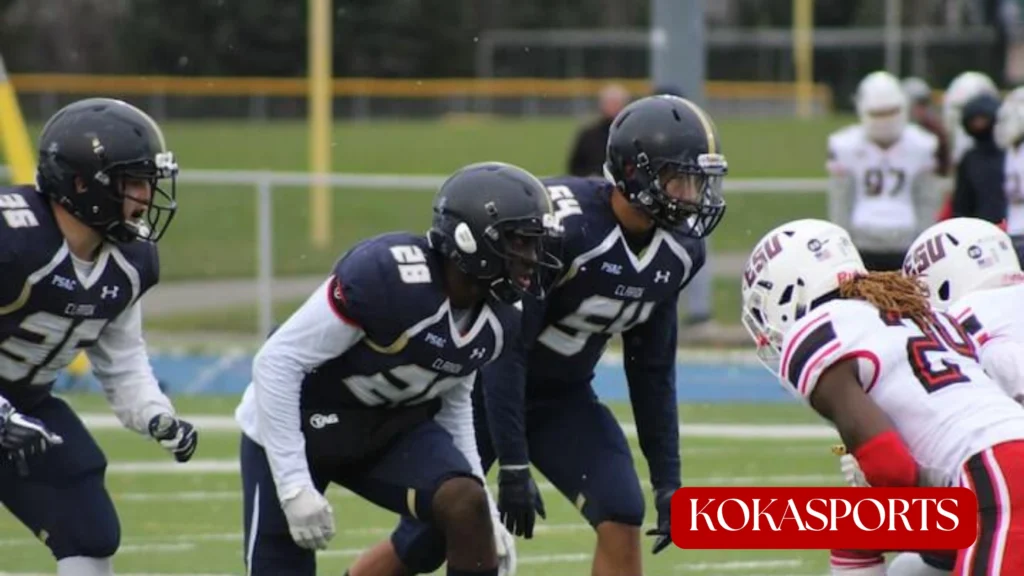
Comparing Different Stances: Choosing the Right Tool
Let’s break down how these different stances stack up against each other. Each has its place, and smart players learn when to use which one stance versus another.
The two-point gives you vision and mobility but sacrifices power. It’s your go-to for pass protection scenarios where you need to move your feet quickly and keep your eyes up to track threats. Defensive back players and linebackers live in this position because their jobs require reading and reacting.
The three-point stance offers the best all-around package. You get good power, decent leverage, explosive movement, and just enough vision to see what’s happening. This is why it’s the standard stance for an offensive lineman in most situations. It’s also the foundation of line play throughout football at every level.
The four-point is your specialized tool. Bring it out in specific situations where maximum power matters more than anything else. Think goal line stands, short yardage defense, or predictable running downs where you can afford to sacrifice vision for pure force.
Position-Specific Stance Strategies
An offensive lineman working in pass block might use two stances: the three-point as their base and the two-point when facing obvious passing situations. Centers often adjust their stance slightly differently than tackles because they need to snap the ball while maintaining proper offensive form.
Defensive ends frequently alternate based on down and distance. On first and ten, they might use a three-point to defend both run and pass. On third and long, some edge rushers stand up in a two-point to get a better jump on the snap and attack with speed instead of power.
Interior defensive lineman players your nose tackles and defensive tackles almost always use either a three-point or four-point stance. They need that low pad level and explosive first step to control the offensive line. Standing up would put them at a severe disadvantage against double teams and combination blocks.
Tackle positions on the offensive side often use slightly wider stances than guards because they face edge rushers who rely on speed. The wider base helps them slide and mirror quick defenders trying to run around them to the quarterback.
Teaching Stance Fundamentals: Coaching Tips That Work
Football coaches know that proper stance technique starts with the basics. For young players, keep it simple. Don’t overwhelm them with too many technical points. Focus on these core principles:
- Feet positioning: Start with shoulder width spacing
- Back alignment: Keep it flat, not rounded or overly arched
- Weight distribution: Balance between forward and backward
- Hand placement: Fingers down, directly under the shoulder
- Head position: Eyes up to see the defense
One effective drill involves having players hold their stance for extended periods. This builds muscle memory and helps them feel what “right” feels like. Have them freeze in position while you walk around making small corrections adjusting a back foot here, repositioning a hand there.
For more advanced players, incorporate reaction drills. Have them hold their proper stance, then blow a whistle or use a cadence to trigger their explosion. This simulates game conditions and helps them translate practice technique to actual plays.
Common mistakes to watch for include:
- Leaning too far forward: Weight too much on the down hand
- Standing too tall: Not enough bend in the knees and hips
- Narrow base: Feet too close together, leading to poor balance
- Looking down: Head drops, limiting vision
- Uneven weight: Too much on one foot back versus the other
Drills That Build Great Stance Habits
Start beginners with simple mirror drills. Have them watch you demonstrate the correct point stance, then copy your movements slowly. This visual learning helps them see exactly how their body should position itself.
Progress to partner drills where one player holds their stance while another gently pushes from different angles. This teaches balance and helps players feel which adjustments keep them stable. The player holding position learns to distribute weight correctly, while the pushing partner develops a sense of where opponents are vulnerable.
For offensive and defensive players working on their explosiveness, use the foot back drill. Have them start in their stance, then on your command, drive forward three steps at maximum intensity. Reset and repeat. This builds the explosive power needed off the snap while reinforcing proper form.
Ball movement drills simulate game conditions perfectly. Have someone snap a ball (or simulate a snap) while players in their stance react and fire out. This adds the element of timing and helps them learn to explode on movement rather than sound.
The Debate: Stance Evolution and Safety Concerns
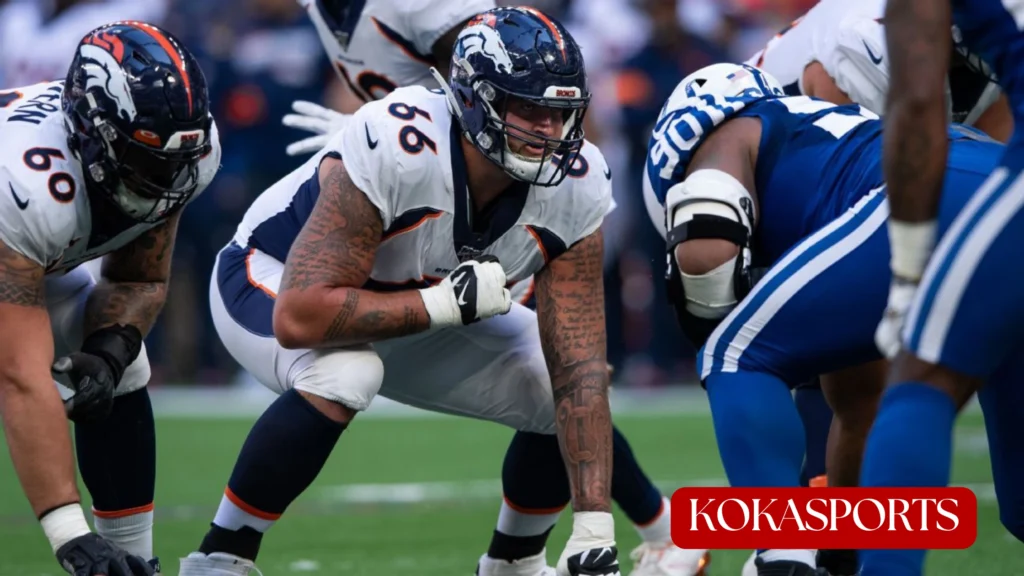
Recent years have brought interesting discussions about banning the three-point stance in some youth and high school football programs. Safety advocates argue that eliminating stances where players’ heads are low could reduce concussion risks by keeping heads out of the primary contact zone.
Proponents of this change point to data suggesting that head and neck injuries occur more frequently when players start from low positions. By requiring all players to use two-point setups, they believe games become safer while still maintaining competitive integrity.
Opponents counter that proper stance technique actually improves safety by teaching players correct body positioning and leverage principles. They argue that banning traditional stances removes an essential element of football rules and fundamentally changes how the game is played.
The research remains ongoing, and different leagues continue to experiment with various offensive line stances regulations. What’s clear is that safety concerns are driving innovation in how we teach and use stances used throughout football.
Some leagues have implemented compromise solutions. They allow traditional stances but add strict rules about head-up tackling and blocking techniques. Others require offensive lineman players to use two-point stances while still allowing defensive lineman players to use three or four-point setups.
Advanced Concepts: Getting a Better Position
Elite players constantly seek ways to gain advantages through small adjustments. They might shift their stance slightly based on which side of the line they’re playing. A right tackle faces different challenges than a left tackle, and smart players adjust accordingly.
Wind conditions, field surface, and opponent tendencies all factor into stance selection. Playing on a muddy field? You might widen your base for better stability. Facing a speed rusher? Adjust your foot back positioning to better handle lateral movement.
Film study reveals opponent tells that inform stance choices. Maybe you notice that when a particular defensive player leans heavily on his left hand, he’s planning to shoot the right gap. That information helps you adjust your stance and initial movement to cut off his attack angle.
The concept of a better position extends beyond just the physical setup. It includes mental preparation, film study, and game awareness. A player might have perfect physical form but still lose battles because they don’t process information quickly enough.
Mastering Stance for Peak Performance
Great football players don’t just learn one stance hey master multiple positions and know exactly when to deploy each one. This versatility makes them harder to scheme against and more valuable to their teams.
Think of stance work like a martial artist practicing basic stances. It might seem boring or repetitive, but those fundamentals create the foundation for everything else. A lineman who shortcuts stance work will develop bad habits that limit their potential. Meanwhile, players who commit to perfect practice build automatic responses that show up on game day.
The best position players experiment with small adjustments to find their optimal setup. Maybe moving your inside foot back an extra inch gives you better push. Perhaps widening your base by two inches improves your balance against power rushers. These tiny tweaks, developed through thousands of repetitions, separate good players from great ones.
Whether you’re coaching, playing, or just appreciating the game from the stands, paying attention to stance work reveals the chess match happening before each play. Watch how players position themselves. Notice when they adjust based on down and distance. See how offensive and defensive players try to gain tiny advantages through superior setup and technique.
Conclusion:
The foundation of football excellence isn’t flashy it’s fundamental. Every great play starts with a solid stance, proper body positioning, and explosive movement off the ball. Whether you’re using a two point stance for coverage, a three-point stance for balanced power, or a four-point stance for maximum leverage, mastering these basics separates winners from losers in the trenches.
For football players at any level, committing to perfect stance technique pays dividends every single play. Your coaches will notice. Your teammates will benefit. Most importantly, you’ll feel the difference when you’re winning your individual battles and helping your team move the chains.
Take these principles to the practice field. Work on your form daily. Ask your coaches for feedback. Film yourself to see what you’re actually doing versus what you think you’re doing. Small improvements in stance lead to massive improvements in performance.
Remember: before every touchdown, every sack, every momentum-shifting play, someone won their battle at the line of scrimmage. That victory started with a proper stance. Make yours count.
FAQs
What are the 4 D’s in football?
The 4 D’s are Discipline, Desire, Dedication, and Determination key traits for success in football.
What is the 3-point stance?
A 3-point stance is when a player places two feet and one hand on the ground for balance and power, commonly used by linemen.
How many types of stances are there?
There are three main football stances the two-point, three-point, and four-point stances.
What is the hardest football position?
Many consider quarterback the hardest position because it requires leadership, quick decision-making, and deep knowledge of the game.

